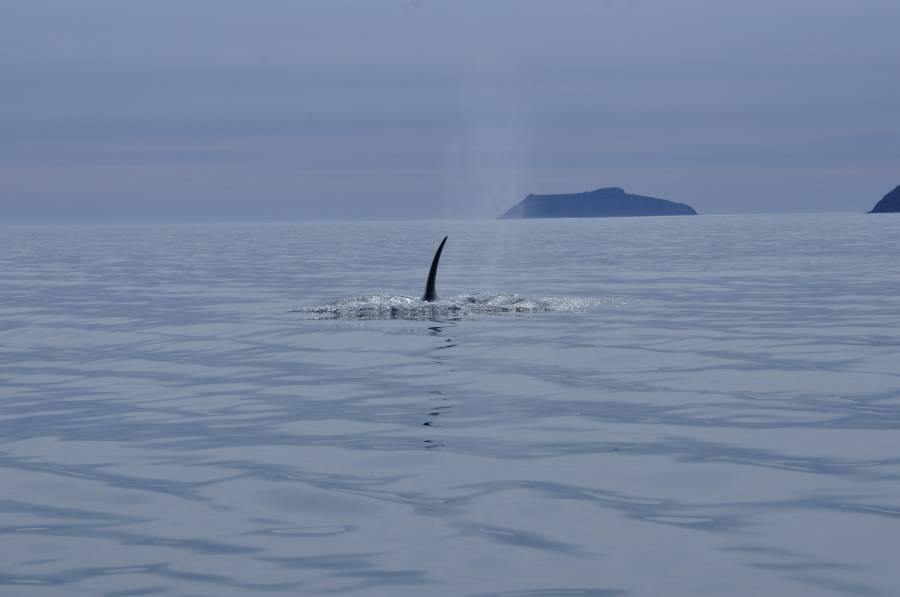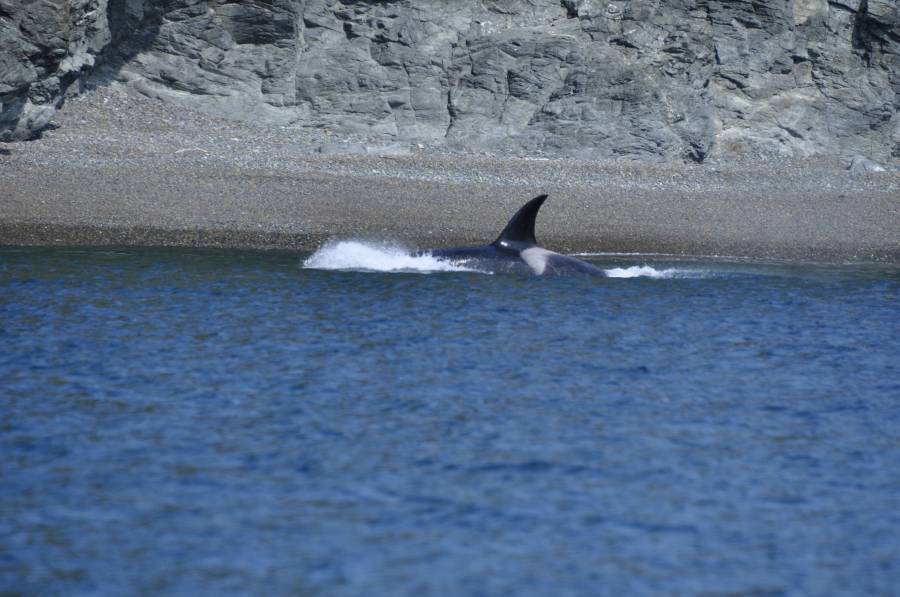The Steller’s Sea Eagle surveys of 2012
The results of the July-August trips.
In the end of July- beginning of
August we made our regular surveys along the Kava and Chelomdja, along the
coasts of the Magadan vicinity (Staritskogo Peninsula), Odyan and Motykley Bay.
We were accompanied by Michael Rodgers, a senior student of the Bryn Athyn
College. His trip was made possible to the Bryn Ahyn travel loans.
The
order of trips was un-conventional. Due to severe cyclons which made weather on
the coast unbearable we started from the Kava-Chelomdja portion of the Reserve
(July 25 – 1 August), then proceeded to the Motykley Bay and Talan island (1 –
4 August), then to the Odyan Bay (5-6August), and and finally to Staritskogo
peninsula (8 August). The weather window gaps at the sea were the main
constrains for this season.
The Kava Chelomdja portion of the
Reserve showed a good breeding success this year, as was already reported by
the June trips. We covered our usual study area (upstream to the upper chum
spawning grounds at the Chelomdja (overnight at the Kheta ranger’s station),
and up to the Ikremun ranger’s station on the Kava (see map below). Both rivers
had NO pink salmon run. I saw only 2 dead pink salmon during the entire trip.
The bears were skinny and not numerous along the rivers, thanks to a good
standing crop of the Siberian creepy pine on the mountain slopes. The was no
seal rookery at the Kava-Chelomdja confluence this year. A fisherman who
usually accommodated us at the Balagannoe was complaining that this year they
managed to harvest only 2 kilos of caviar, whereas in a ‘usual year’ he gets
2-4 tons. The coho salmon was not abundant either, so the fishermen were
counting on the Silver Salmon run which was expected to be good. There was no
commercial salmon tickets issued this year, so the fishing camps on the river
were idle.
However,
the eagles were doing good. On the Kava trip we deployed a drone (quadrotor
helicopter I assembled from the kit www.diydrones.com). The drone has a video
camera (GoPro) and in parallel transmits live video to the video goggles. We
deployed the drone only when the contents of the nest was not clear. On the
Kava I flown 4 missions.
In total
we had 8 occupied pairs on the Kava, 3 pairs had chicks: 2+2+1 (see table
Occupancy in the drop box).
The
deployment of the drone was quite a success. The mission takes max 10 min, and
delivers clear visual imagery of the nest contents. The tricky part
was transportation of the drone. I made a case filled with foam, which also
acted as a launch pad. Our student M. Rodgers was acting as a “spotter”
advising me on the air situation, Irina was watching through the video goggles
and advising me ‘left’, “right” and “higher/lower”, so the nest would be in the
view. I was obviously controlling the craft.
Transporting drone to a launch site.
Drone hovering at a nest
Flying team: spotter (M.Rodgers who took this picture. He sees the big
picture), I. Utekhina looking through the video goggles, and commands the pilot
(E.P.). Launch pad (the case) is in deep grass in front of the pilot.
We had no
reaction of the eagles to the drone. However I crashed the drone during one
mission (repaired the craft on the spot). In the nest M30-90 the second chick
was spotted only thanks to the drone. From the river we saw only 1 chick. At
one occasion we had a hobby investigating the drone. So, despite
some logistical difficulties the drone was extremely useful to save time in
some cases.
Hobby
investigating the drone above an eagle nest.
Drone hovering at a nest.
Note the drone at the upper right corner.
The same nest as viewed
by/from the drone.
The Chelomdja river was checked on
30-31 July. We went upstream to the spawning grounds eager to see what happened
to the early nest there (the one Irina was reporting in June). We found the
nest empty ut saw a large flying chick. The spawning grounds were totally
empty. I do not recall that I saw it empty ever. I flew a drone mission above
the stretch where the spawning grounds were and so no fish dead or alive. At
the same day we flown a drone mission at the nest M105. This nest had 3
hatchlings in early June. However this time our drone mission returned only 2
grown chicks. So the first nest with 3 chicks on a river has not happened.
One
nest which had a dead chick under it and a female incubating was found empty
(again, drone mission flown). One nest was clearly destroyed by a bear.
It total we had 4 nests with chicks
on the Chelomdja (1+2+1+1) totaling 5 chicks at the 14 occupied territories.
We spend night on the Khuren ranger’s station
(as per usual).
On
the Taiy we had 3 pairs with chicks (one each).
This means that this year was very
productive for the Tauy-Kava-Chelomdja river system.
Motykley trip.
On 2 August we set off from the
Balagannoe to the Motykley bay. We spend night at the spit at the north-eastern
part of the bay. While surveying the coast we were accompanied with a pod of
orcas (Figure 8). The orcas were scraping the shallows and were coming very
close to the shore. We saw eagles drawing no attention to orcas. We surveyed
the Motykley bay (the rotten corner) on the following day and went along the
coast to the Shestakova cape, i.e. getting the same route as in 2011. At the
Shestakova cape we hit a sever storm and fog and had to move with the wind to
the Talan island.
Orca scraping the
shore in front of the eagle nest (B10, the nest is not visible). Top: Orca
heading towards the boat at the nest B9. Talan island in the view.
The Talan island was covered with
thick fog. Our two attempts to check the nests were not successful. However we
know that the two occupied nests contained 2 and 2 chicks.
In total this stretch of the coast
had 26 occupied nests with 19 chicks. Only 3 nests had duplets.
Odyan Bay trip.
We set off from the Ola on 6 August.
We had about 14 hr of the weather window before the cyclone, so we decided to
cover the Odyan bay in one go without spending the night. The route was
identical to the route of 2011. The sea was relatively calm, and was
sunny most of the day.
To our surprise only 3 nests were
occupied and with chicks on this coast (1,2 and 2). Total occupied pairs was
11.
I guess the reason of lower breeding
output was long period of ice cover which lasted till June (at least what
locals told me). I think I will be able to say more about it when I compare ice
data.
Staritskogo trip.
We made circumnavigation of the
Staritskogo peninsula on 9 August. The route was identical to that of 2011
(Figure 10). On this part of the coast we have 5 occupied nests with chicks (1,
1. 2, 1,1), however the location of the nests changed. Nest A6 was located
further away from the Nagaevo bay, S5 is now most productive, nest S2 is no
longer occupied, and S4 is now shifted from the birch tree to a sea stack S3.
The nest at the resort has only 1 chick compared to 2 last year.














